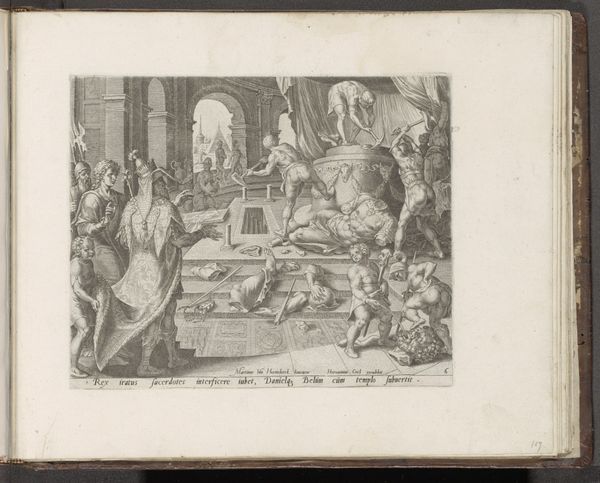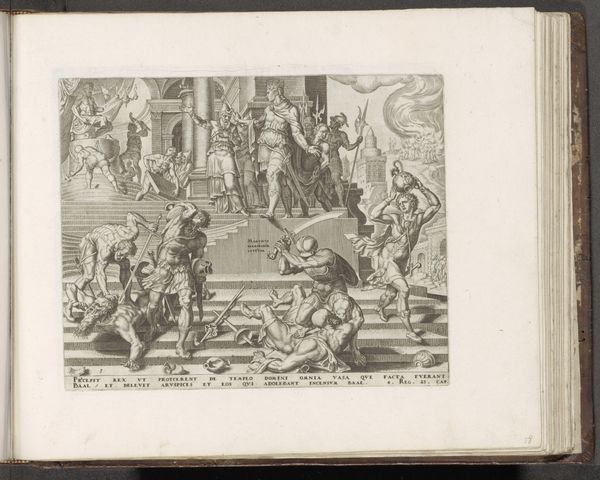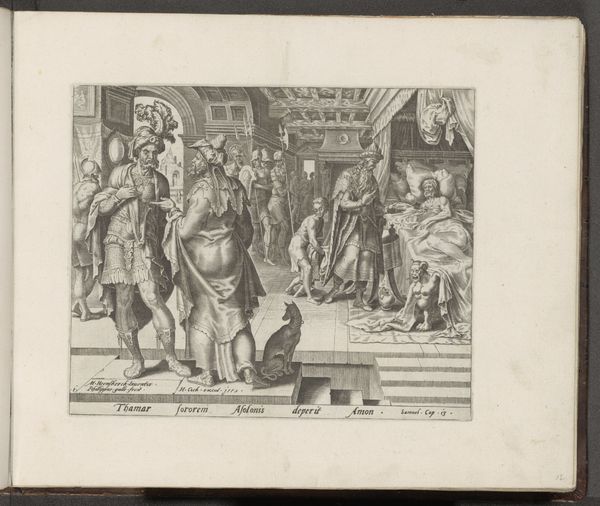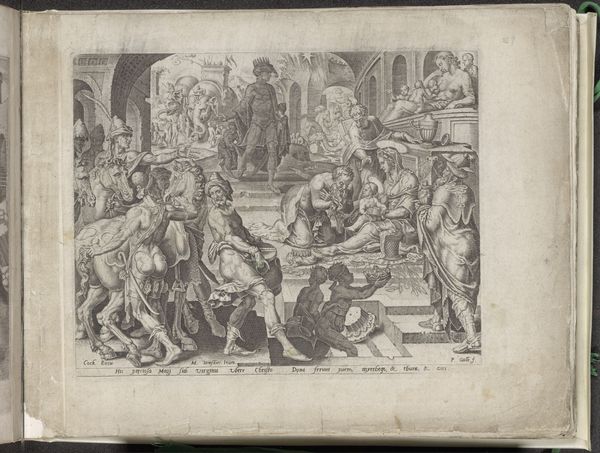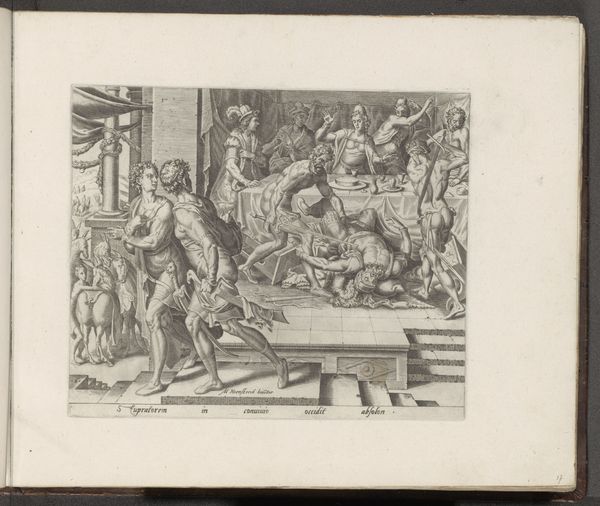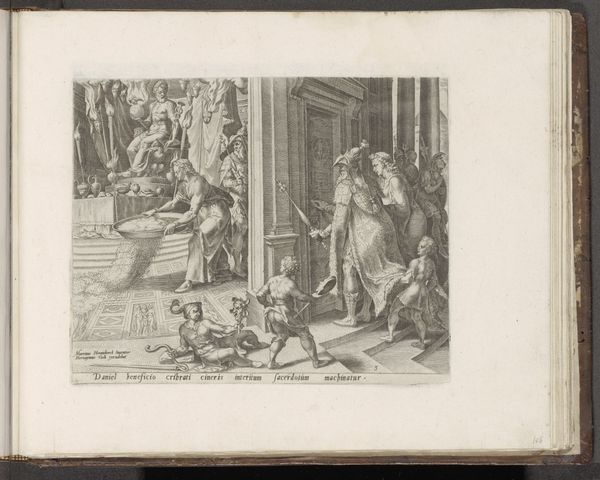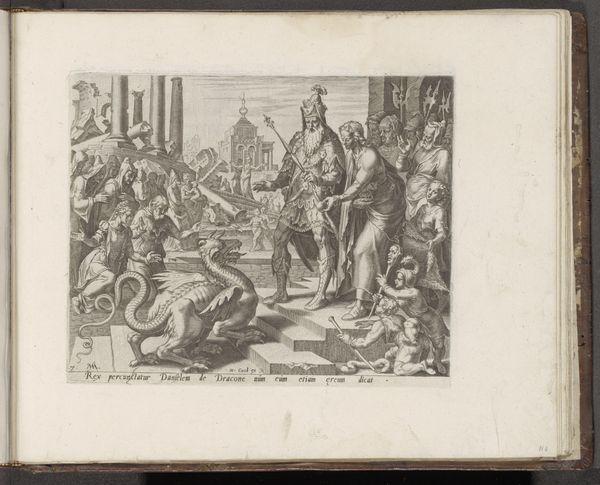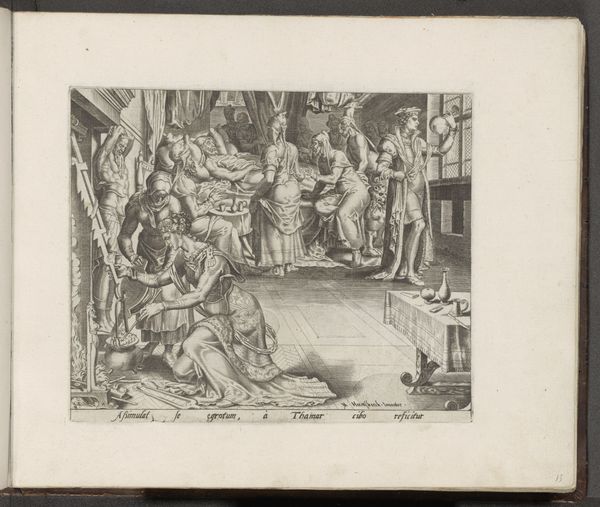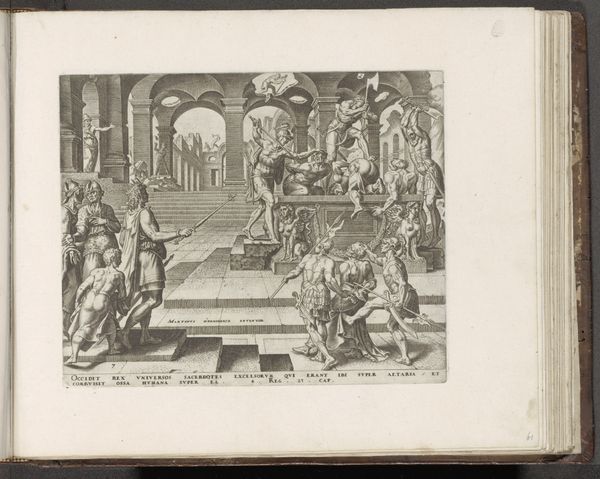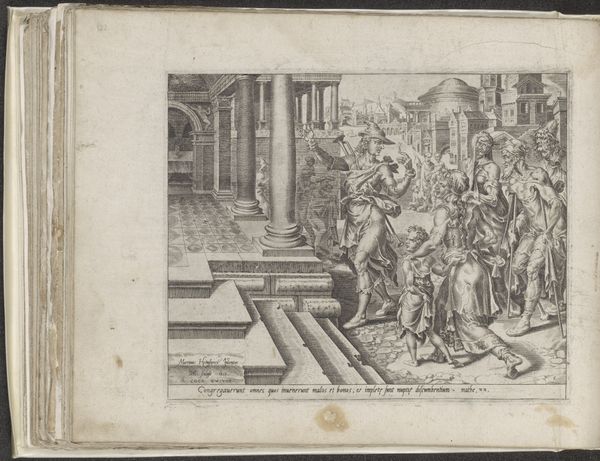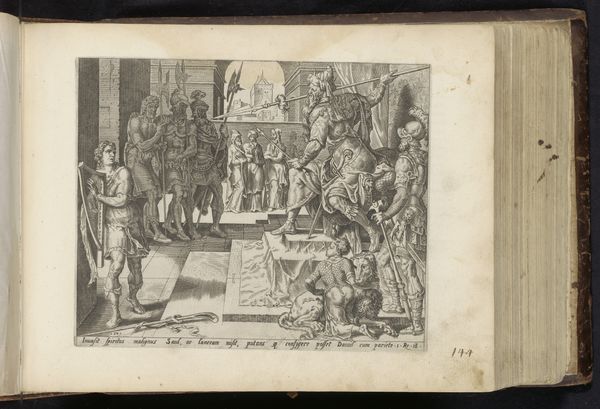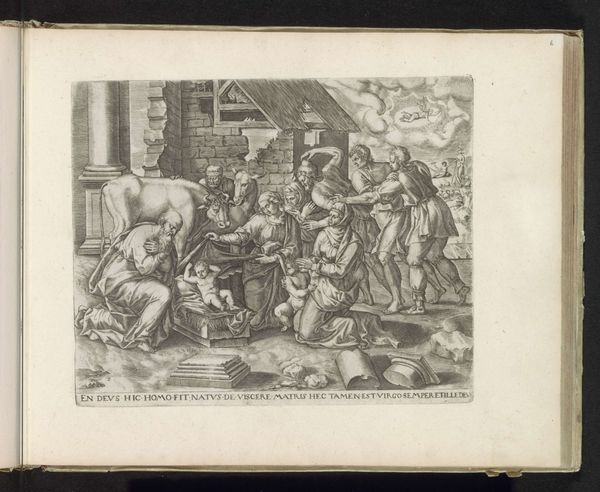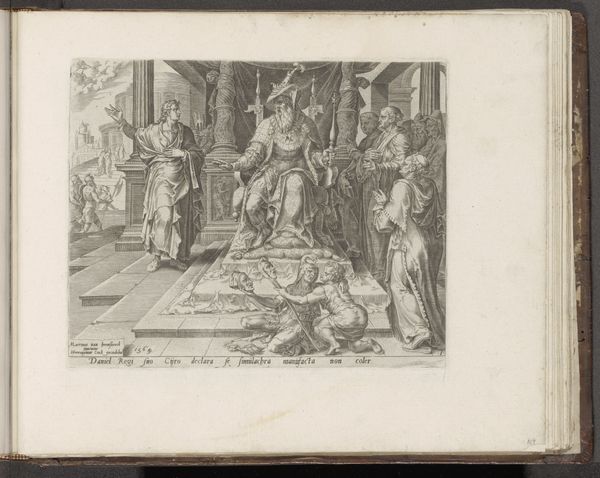
print, etching, paper, pen, engraving
#
narrative-art
# print
#
etching
#
mannerism
#
figuration
#
paper
#
coloured pencil
#
pen-ink sketch
#
pen
#
history-painting
#
engraving
Dimensions: height 200 mm, width 246 mm
Copyright: Rijks Museum: Open Domain
Editor: Here we have Philips Galle’s etching, “Daniel Reveals the Deceit of Bel's Priests,” made sometime between 1565 and 1579. I'm immediately struck by how busy it is, all these figures packed into the scene, almost theatrical. What sort of story do you see unfolding here? Curator: I see the performance of truth itself. Galle, working in the Mannerist style, gives us not just a depiction, but a symbolic unveiling. Daniel, positioned centrally, isn’t merely revealing deceit; he’s challenging a whole system of belief. Notice the temple of Bel in the background and the footprints on the temple floor. It becomes a metaphor for challenging dogma itself, a theme that resonates powerfully through time. Do you notice the tension between the stillness of Bel’s idol and the dynamism of Daniel and his actions? Editor: Absolutely, that contrast is really effective. So, it's less about the specific story and more about the broader theme of questioning established power? Curator: Precisely. Galle uses recognizable symbolic codes – the idol representing entrenched power, Daniel as the righteous revealer – to tap into a collective understanding of justice and truth. Think of how often these symbols are repurposed across cultures to represent similar concepts. This isn't just a biblical scene, but a reflection of humanity's constant struggle between truth and falsehood. The bare feet that reveal the priests and the food they took serve the role of what symbols, connecting heaven and earth. How do you interpret this sign? Editor: That’s fascinating, framing it as a cultural touchstone rather than just a historical depiction. It makes the print feel much more relevant, like a conversation about the power of symbols across time. Curator: Indeed. And by engaging with these images, we are participating in a centuries-old dialogue, continually reinterpreting their meaning in light of our own experiences and beliefs. A sign is more than just itself: It is what can make known to people something about life or death. Editor: That really gives me a fresh appreciation for not just this print, but the power that images hold in shaping our understanding of the world. Thanks!
Comments
No comments
Be the first to comment and join the conversation on the ultimate creative platform.
